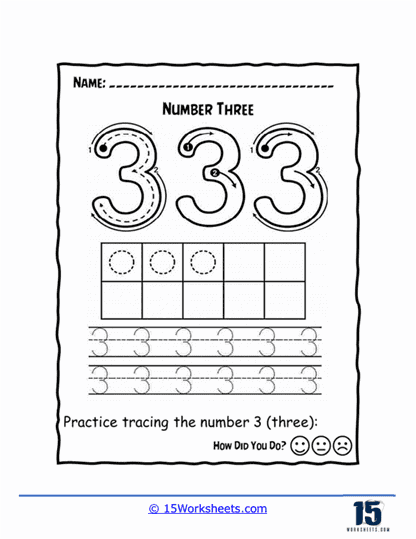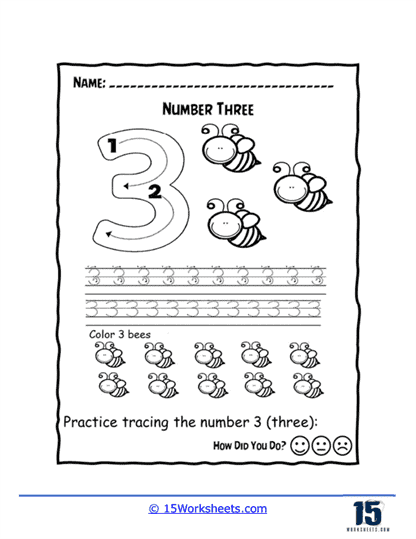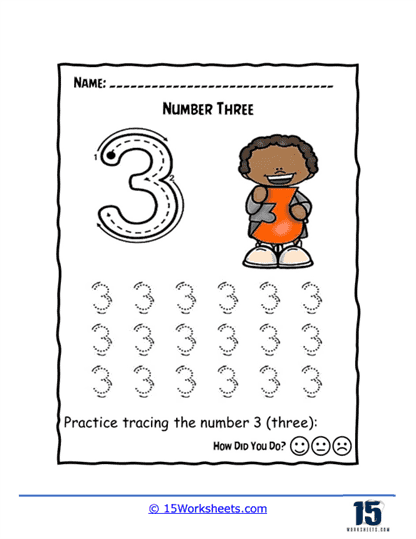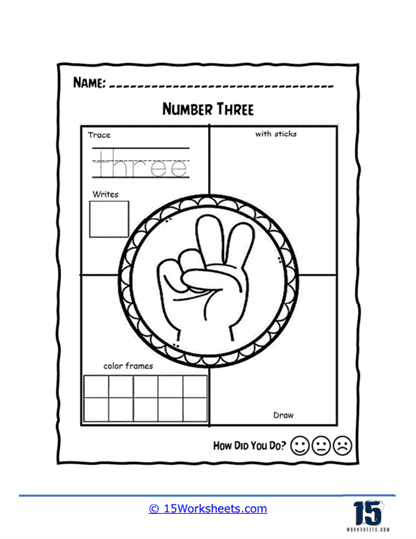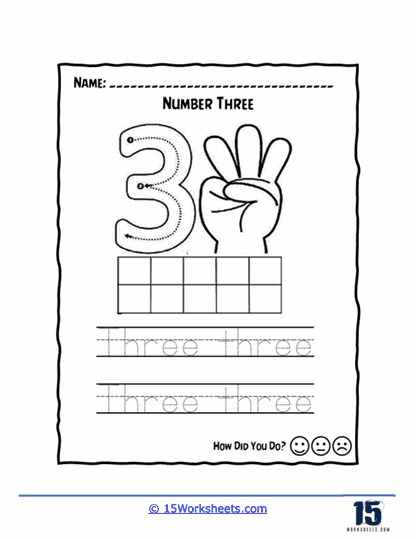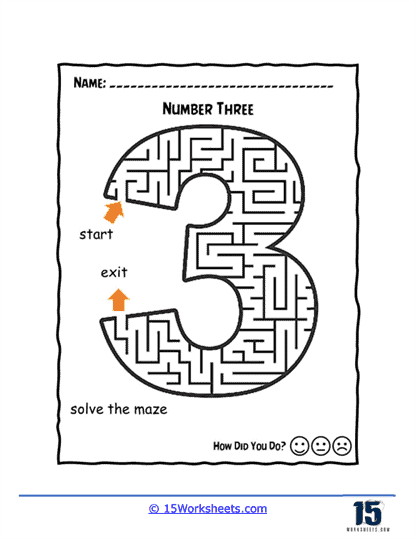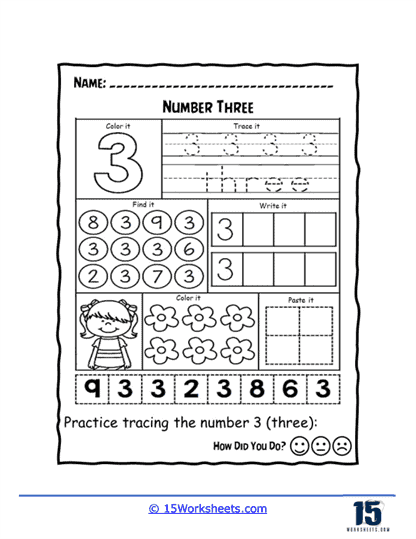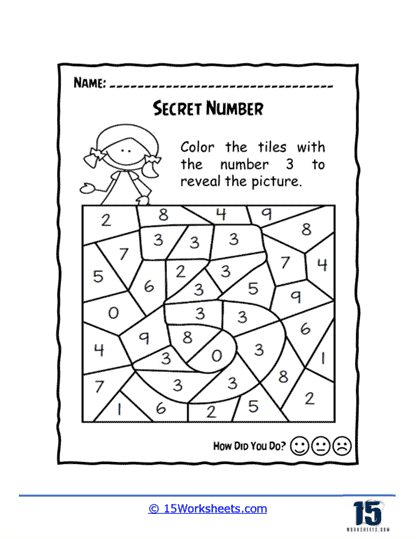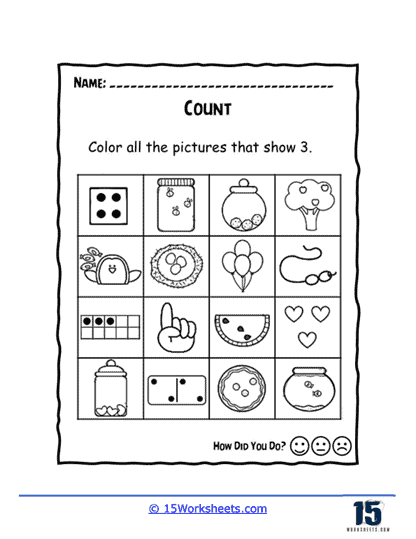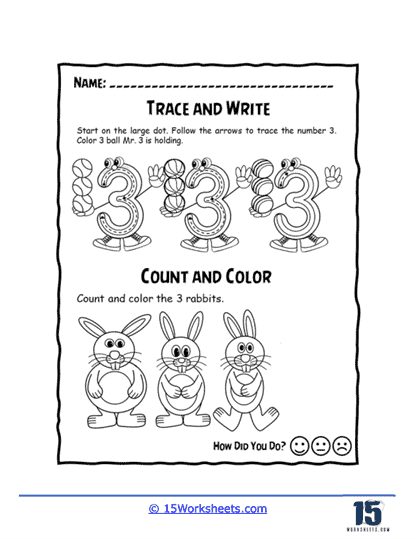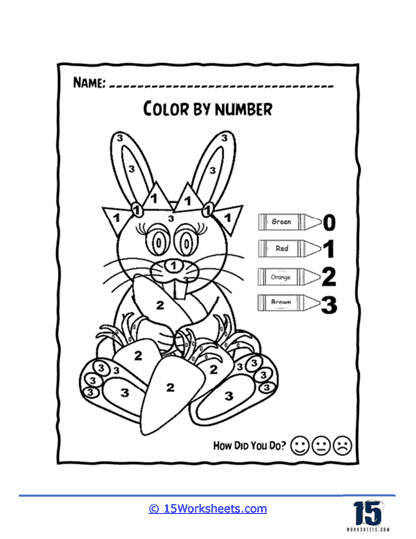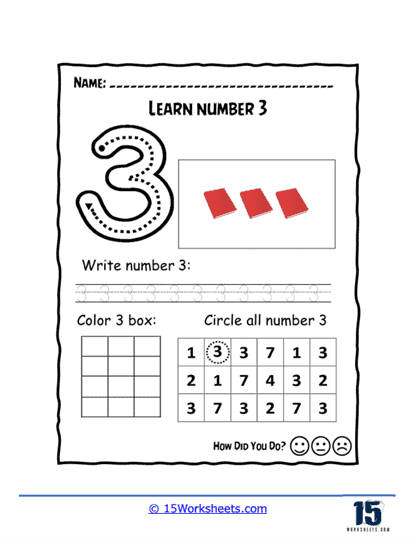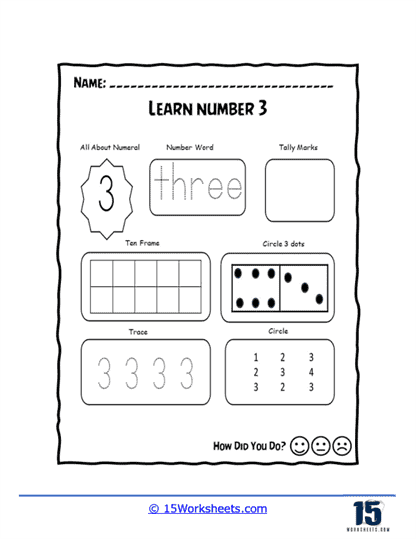Number 3 Worksheets
About These 15 Worksheets
Number 3 worksheets focus entirely on introducing students to the number three. They’re used to teach young children about this number and everything it entails – how it looks, how it’s written, its place in the order of numbers, and other important stuff like its uses in basic math.
You see, when you were younger, maybe 4 or 5 years old, you would’ve used these worksheets as a way to learn about the number 3. For example, one of the most common exercises is tracing. The worksheet would have several dotted or faded outlines of the number 3, and your task would be to trace over them using a pencil or crayon. This activity helps kids understand the shape of the number 3 and how to write it.
These types of worksheets will also have counting exercises. It could include pictures of different sets of items – apples, cars, stars, you name it. Some sets would have three items, while others would have more or fewer. The job would be to identify and circle the sets that have exactly three items. You could also find basic addition and subtraction problems on these worksheets that use the number 3. So, for instance, you might see problems like “3 + ? = 5” or “6 – 3 = ?”. These help children learn how the number 3 interacts with other numbers within basic mathematical operations.
And don’t forget about coloring activities! Some worksheets will have sections to color in, for example, every third object in a sequence or color in three specific objects in a picture. These activities would help you visually and creatively understand the concept of the number 3.
Remember, everyone needs to start from somewhere, and these worksheets provide a basic, fundamental understanding of numbers. The next time you see a young kid working on a number 3 worksheet, you’ll know they’re beginning their exciting journey into the world of numbers, just like you did a few years ago.
Tips For Introducing Kids to the Number 3
Here are some steps and strategies you can use:
Tracing and Writing – Start with visually introducing the number. Draw the number 3 on a piece of paper, show them a flashcard, or point out the number 3 on a poster or in a book. Give children worksheets with dotted or lightly printed number 3s. Encourage them to trace over these with their fingers first, then with a crayon or pencil. This helps them become familiar with the shape of the number.
Counting and Identifying – Use everyday objects such as toys, blocks, or pieces of fruit. Begin with one object, add another to make two, then another to make three. Each time you add an object, count from one again so they understand that three comes after one and two. Once the child is familiar with how to write the number 3 and understands what it represents, play games that help them identify it. For example, you could play “I Spy” but with numbers, where they have to spot the number 3 among other numbers.
Storytelling – Incorporate the number 3 into stories or songs. The classic “Goldilocks and the Three Bears” is a perfect example. Nursery rhymes and songs like “Three Blind Mice” or “Three Little Monkeys” are also great. Revisit the number frequently to solidify the concept. Over time, increase the complexity of activities involving the number 3.

